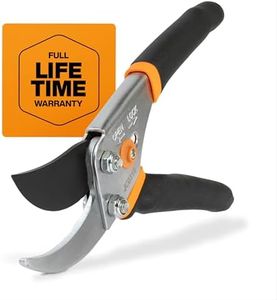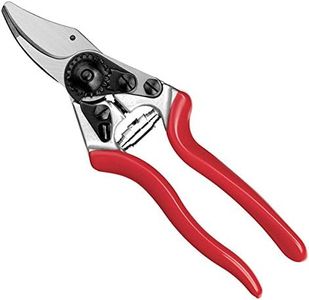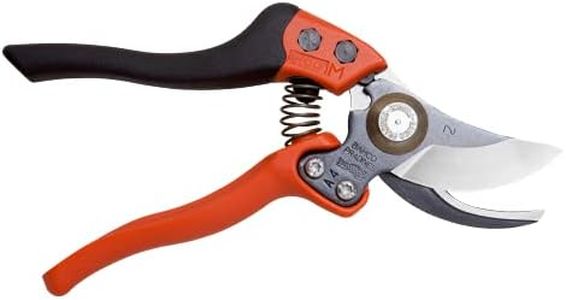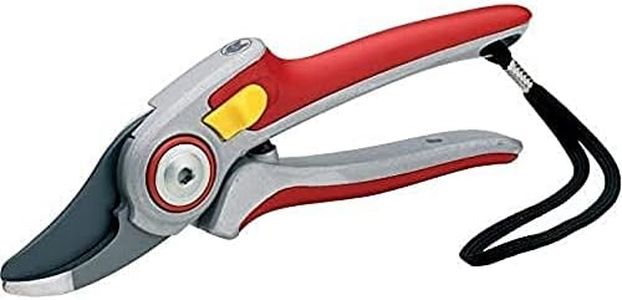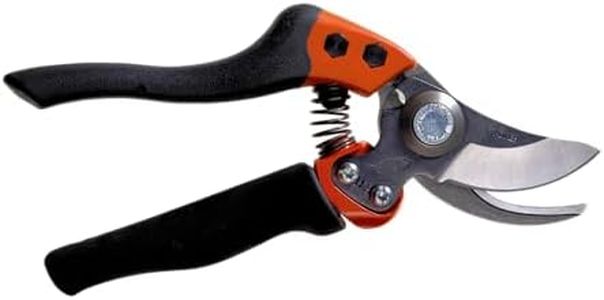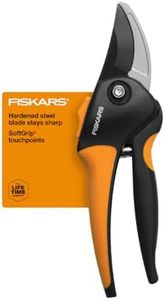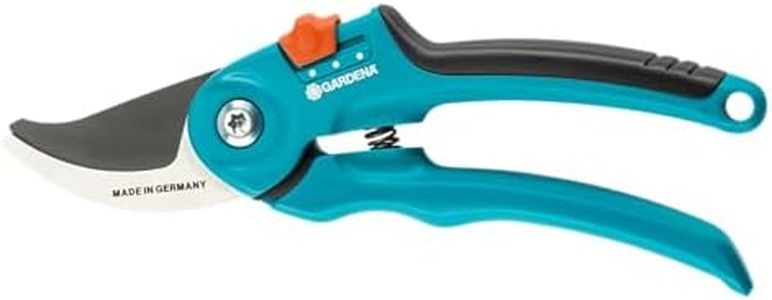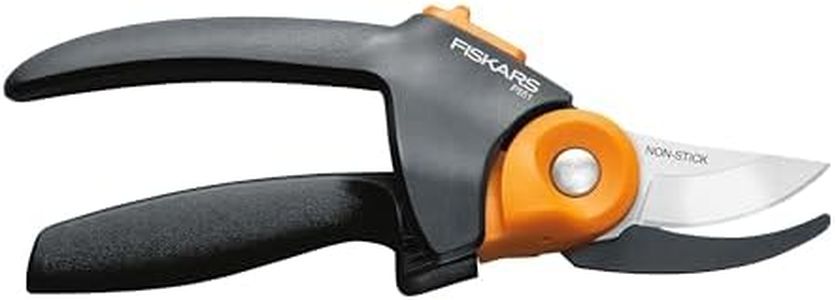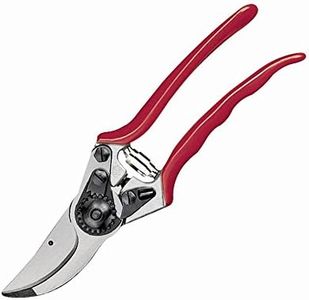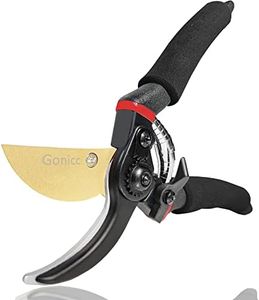We Use CookiesWe use cookies to enhance the security, performance,
functionality and for analytical and promotional activities. By continuing to browse this site you
are agreeing to our privacy policy
10 Best Pruners For Arthritic Hands
From leading brands and best sellers available on the web.Buying Guide for the Best Pruners For Arthritic Hands
Choosing the right pruners when you have arthritic hands can make gardening much more comfortable and enjoyable. The key is to find tools designed for ease of use, minimal hand strain, and increased comfort. You'll want pruners that require less force to operate, have comfortable grips, and are lightweight. Understanding the main features and how they affect use will help you pick the right pair for your gardening needs and physical comfort.Handle ErgonomicsHandle ergonomics refers to how comfortable and easy the pruner is to hold and use. For those with arthritis, well-designed, ergonomic handles can make a big difference by reducing the pressure and discomfort on your hands. Look for soft, padded, or contoured grips that fit naturally in your palm. Some handles are curved or have non-slip materials to help with grip. If you have strong arthritis symptoms, prioritize handles that are thick and easy to grip rather than thin ones that require more effort to hold.
Cutting MechanismThe cutting mechanism is the way the pruner cuts through stems and branches, and it greatly affects how much force you need to use. There are typically two types: bypass and anvil. For arthritic hands, ratchet or gear-assisted mechanisms are especially helpful because they multiply your hand strength, making it easier to cut with minimal effort. Ratchet pruners can be operated in stages, letting you squeeze gently several times instead of all at once. Choose a cutting mechanism based on how much strength you have and how thick the branches you want to cut are.
WeightWeight is how heavy the pruners feel in your hands. Lighter tools are generally easier to manage for longer periods, which is important if your joints get tired or sore quickly. If you have severe arthritis or low hand strength, choose the lightest pruners you can find that still feel sturdy. If you only prune occasionally, weight may be less of an issue, but for regular use, lighter is usually better.
Spring MechanismA spring mechanism automatically reopens the blades after each cut, which takes pressure off your fingers and helps you work with less fatigue. Some springs are easier and gentler, while others require more effort to squeeze. Look for a pruner with a smooth and soft-action spring if you struggle with finger movement. If you have difficulty with springs slipping out or popping off, choose integrated ones that stay securely inside the handles.
Blade Sharpness and MaintenanceBlade sharpness determines how easily the pruner slices through branches, reducing the amount of force you need to use. Sharp, high-quality blades stay effective longer and make clean cuts, which not only protects your plants but also lessens the strain on your hands. Consider pruners with non-stick coatings and easy-to-clean designs to ensure the blades stay in good condition and require less effort to maintain. If you don’t want to maintain your blades often, pick rust-resistant materials.
Locking MechanismA locking mechanism holds the blades closed when not in use, making the pruner safer to handle and store. For those with arthritis, the design of this lock matters — some are easy to open and close with one hand, while others may be tricky or stiff. If finger mobility is an issue, seek pruners with large, easy-to-move locks or sliding mechanisms instead of small buttons or twist locks.
